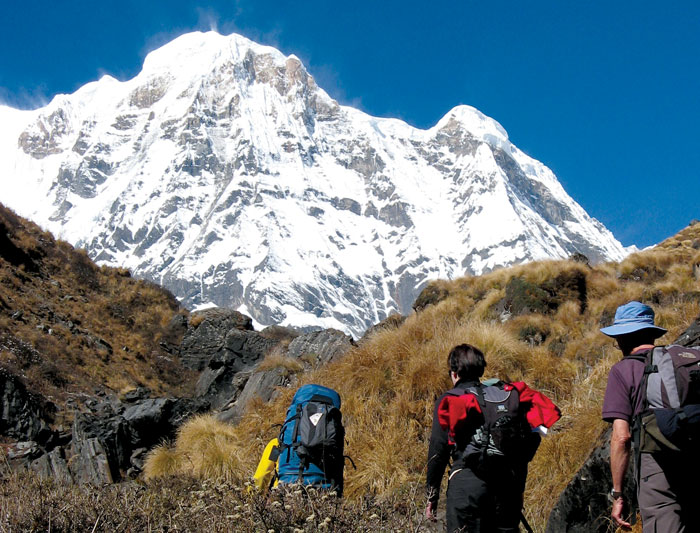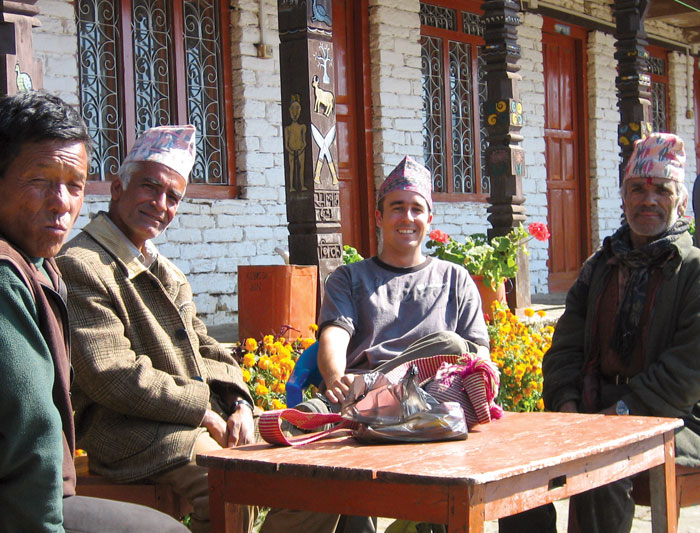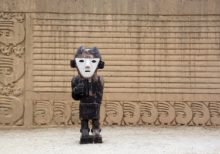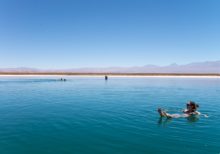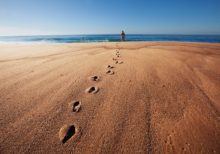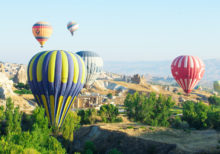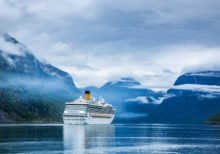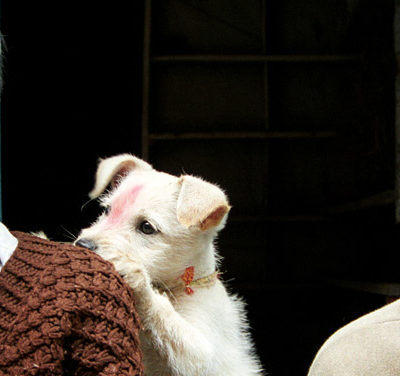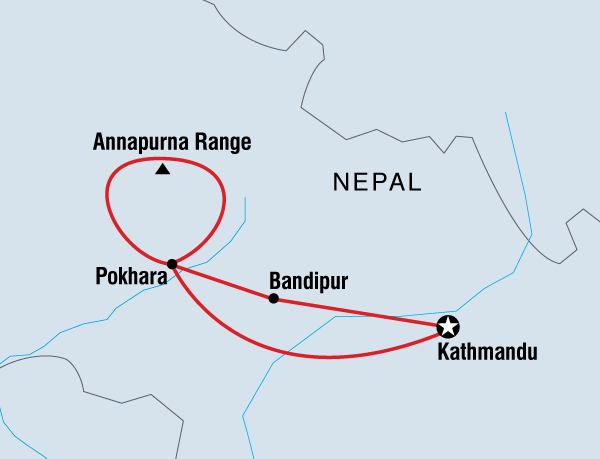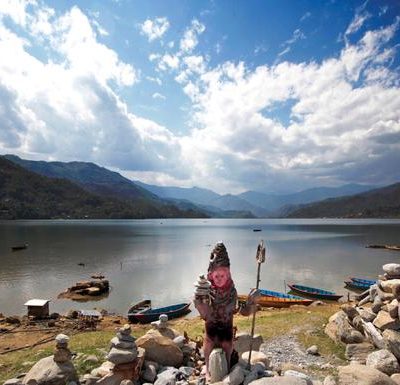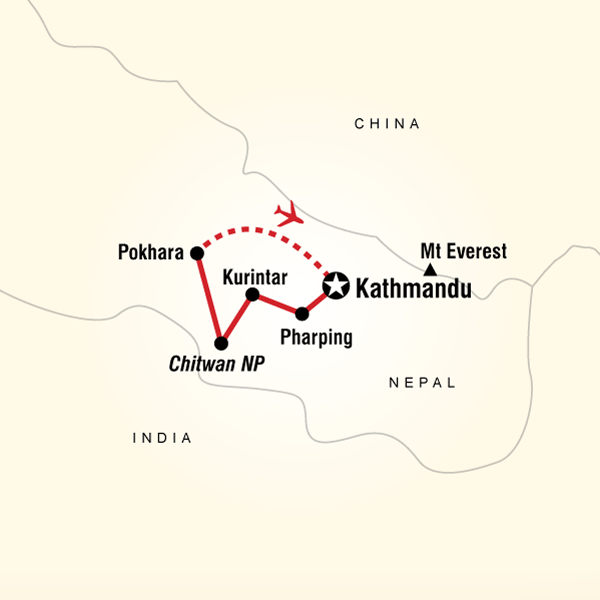| Starts | Kathmandu, Nepal |
|---|---|
| Ends | Kathmandu, Nepal |
| Region | Nepal |
| Duration | 16 days |
| Tour Operator | Intrepid Travel |
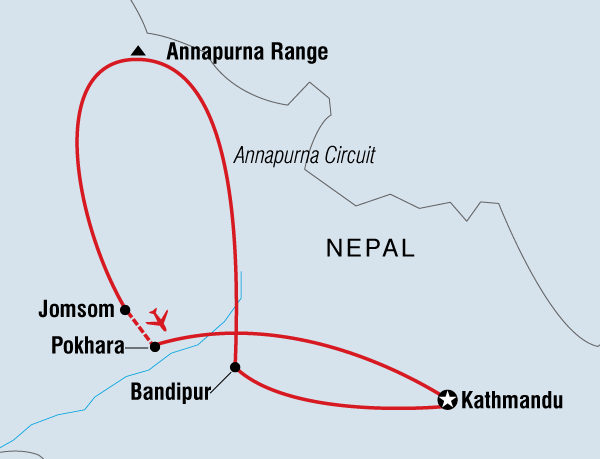
Itinerary
Day 1 - Starting: Kathmandu & Finishing: Kathmandu
Namaste! Welcome to Nepal. Please arrive by 14:00 on Day 1 as we will have an important group briefing. Your leader will leave a note at reception telling you where and when this important meeting will take place. Please ask a member of reception for this information. Kathmandu, the colourful capital of Nepal, is a fascinating blend of traditional architecture and symbols of the 20th Century. Its rich artistic and cultural heritage is evident where ornately carved balconies mingle with beautiful shrines and temples. If you arrive early we recommend you check out Durbar Square with it's temples, markets and busy atmosphere. It is also worth the climb to visit the Swayambhunath - the 'monkey temple'. Explore the network of street markets and alley bazaars and Pashupatinath. For those with a few extra days in Kathmandu, the neighbouring towns of Patan and Bhaktapur are well worth a visit.
Day 2 - Starting: Bandipur & Finishing: Bandipur
Leaving Kathmandu, we head for Bandipur, first by local bus and then by Jeep; stopping along the way at Dumre (approx.5 hours). Located high on a ridge (1,000 m) above the road to Pokhara lies this little-known Newari trading village. At the eastern part of the town is the pagoda-roofed Bindabasini temple which acts as the abode of the goddess Durga, Bandipur's guardian deity. The rich wooden carvings and detailed brass-work that adorn the temple are replicas of those found in the many old pagoda structures of the Kathmandu Valley. Bandipur is still not in many travellers 'to visit' list, so the likelihood of meeting fellow travellers is still very minimal. The views are stupendous, as is the warm local welcome. There is a terrace opposite the hotel in the main street from where you can view the other side of the valley and watch the goings on of the village - a great place to enjoy an afternoon drink. In front of the guesthouse is a café and bar serving simple, delicious meals from locally sourced organic ingredients. Be prepared for simple lodgings and food, but more importantly the genuine friendliness of the locals and the simply stunning views of the Annapurna and Manaslu mountain ranges - the hallmark of this region. Bandipur is a basic village but the surrounding countryside makes for great walks and all the locals will want to talk to you and guide you on your way. Our accommodation for the night is a restored village mansion in the heart of the old bazaar. The rooms here are simple but cosy in traditional style with dim lighting, old wooden doors and thick brick walls. The timber and red brick building with carved beams and staircases has pleasant twin and double rooms in traditional style with separate shared facilities (towels provided, separate ladies'/gents' blocks). The facilities might be simple, but the staff are extremely friendly and helpful and the Nepalese feel of the place has been retained so it's a favourite of many of our travellers.
Day 3 - Starting: Bahundanda & Finishing: Bahundanda
We immerse ourselves in the spectacular mountain wilderness that encompasses the Annapurna Range. At 8,091 m, Annapurna 1 is one of the highest mountains in the world. Its surrounding sister mountains are equally imposing, creating magnificent panoramas from any viewpoint. Throughout the trek we come across isolated mountain communities, each with different ancestral customs and traditions, resulting in not only a visually superb expedition but also a culturally rich one. We meet warm and welcoming locals herding yaks and goats on the grassy pastures and visit their monasteries and temples. We pass waterfalls of melted snow, cross icy rivers, walk along broad plains and hike up high mountain passes. A couple of days are also allowed for rest and acclimatisation. Please note that the following itinerary can vary due to unforeseen circumstances including weather conditions or bandhs (strikes) called by the political parties. All trekking times are approximate. Our accommodation along the way is at local lodges, better known as teahouses, where accommodation is comfortable without being luxurious, toilets and washing facilities are shared and rudimentary, and the food is plain and filling. In a teahouse, we are provided with small private rooms with twin beds, mattresses and pillows. At times, in high seasons, and in places where there are a limited number of teahouses, we may have some nights in dormitories. In some places, teahouses don't have access to electricity and depend on solar powered lighting. In remoter regions, teahouses don't have running water and toilets can mean just a hole in the ground. Hot shower facilities are available in the majority of the teahouses for a price although in most of the places, a hot shower means a bucket of hot water! Drive to Besisahar (1.5hrs approx). Immediately on the the trail that takes you through Besisahar bazaar leading downstream, followed by the climb up the rocky steps. There are several ups and downs as the trail makes its way through sub-tropical forests and rice paddies of Sera. Further along, traverse a long saggy suspension bridge across Khudi Khola and arrive at Bhulbule. Resume on the trail that traverses the Marshyangdi River on a long, feeble suspension bridge as Bhulbule is left behind. Once the Ngadi River is crossed, the trail gently leads upwards through scrub forests and across landslides for a short distance, which then leads to few teashops and cold-drink stalls located opposite the rice paddies of Lampata, eventually leading to Bahundanda (hill of the Brahmins), an attractive village in the saddle of a long ridge. Total walking time today approx. 6 hours.
Day 4 - Starting: Chamje (1430m) & Finishing: Chamje (1430m)
Dazzling cascades en route as the trail makes a way through a deep wooded canyon with few stretches steep climb. Total walking time approx. 6 hours.
Day 5 - Starting: Dharapani (2100m) & Finishing: Dharapani (2100m)
Trek continues through the deep wooded canyon embellished by stunning waterfalls as you venture into the Manang district. Much of the trail ascends throughout the day. Total walking time approx 7 hours.
Day 6 - Starting: Chame (2710 m) & Finishing: Chame (2710 m)
Marking the end of the great Marsyangdi gorge, make a steep climb to Timang, then the trail settles into gentler slopes as the vegetation transforms from dense pine forests to drier slopes. The district headquarters of Manang, Chame, is the largest settlement after Besisahar. Total trekking time approx 6 hours.
Day 7 - Starting: Pisang (3300m) & Finishing: Pisang (3300m)
A slew of breathtaking scenery this day as the trail goes through a deep gorge, then past the great sweeping slope of Paungi Danda. Mostly easy walk with few ascending stretches of trail. Approx. 5 hours trekking time.
Day 8 - Starting: Manang (3540m) & Finishing: Manang (3540m)
Trek the northern trail via upper Pisang and Ghyaru, an area renowned for its spectacular views. It is now drier and you are sure to come across local farmers herding yaks. (Tip: Tibetan yaks take a special interest in people wearing red!). Trekking time approx. 6 hours.
Day 9 - Starting: Manang (3540m) & Finishing: Manang (3540m)
We spend a day here to acclimatise to the altitude by doing some high climbing then return to the lower altitude of Manang to sleep. Manang, a village of about 500 flat-roofed houses offers excellent views of Annapurna II, Annapurna III, Gangapurna and Chulu East.
Day 10 - Starting: Yak Kharka (4018m) & Finishing: Yak Kharka (4018m)
Covering approximately 7 km, we steadily climb into the alpine region, taking around five hours.
Day 11 - Starting: Phedi (4450m) & Finishing: Phedi (4450m)
Due to the altitude, we'll take the next section of the climb at a leisurely pace, which means we'll have time to admire the magnificent views from this part of the route. Once at Phedi, there will be plenty of time to rest and acclimatise to the higher elevations ready for the next part of the climb where we will encounter the Thorung La Pass, the highest point on this Annapurna Explorer. Trekking time approx 5 hours.
Day 12 - Starting: Muktinath (3800m) & Finishing: Muktinath (3800m)
Setting off very early to cross the Thorung La Pass (5,416 m), the trail is steep but easy to follow. After between four to six hours climbing we'll reach the Pass's peak, adorned with prayer flags, a traditional stupa (chorten) and stone cairns built by travellers. Stop to admire the stunning views and marvel at how far you've climbed. Further along, the trail descends steeply proceeding towards Chabarbu. From here on, the trail crosses meadows, drops into a deep ravine, climbs out and follows a wide trail into Muktinath, a pilgrimage site held in great reverence by both Hindus and Buddhists. Total trekking time approx 8-9 hours.
Day 13 - Starting: Jomsom (2800m) & Finishing: Jomsom (2800m)
Veer off the main trekking trail to make a side trip to an ancient village of Purang. Further up from the village, continue to take the less frequented route going past another village with a medieval feel to it, Jhong. From Jhong, descend to the Jhing Khola (river) following the course which we emerge on to Kagbeni. From Kagbeni, we rejoin the Annapurna circuit route to make a gradual descent through scenic, desert-like terrain, past charming villages and following the windy riverbed to Jomsom. Total trekking time approx 7 hours.
Day 14 - Starting: Pokhara & Finishing: Pokhara
Early morning flight to Pokhara (20mins). We toast our achievement over a celebratory dinner in the character-filled Nepalese town of Pokhara (827 m). Pokhara is a peaceful lakeside location which rests beneath the snow-capped peaks of the Annapurna Range. Sip on a cold brew and gaze up at the dramatic pass that you have just conquered. There are plenty of lakeside cafes where you can enjoy international cuisine, while the main street is full of shops and stalls selling a wide range of Nepali and Tibetan souvenirs. Pokhara is part of a once vibrant trade route extending between India and Tibet. This is the land of Magars and Gurungs, hardworking farmers and valorous warriors who have earned worldwide fame as Gurkha soldiers. The Thakalis, another important ethnic group here, are known for their entrepreneurship. Take time to wander around the town and get to know its friendly residents. Our simple hotel in Pokhara is set 100m back from Fewa Lake and with a back-drop of Machhapuchhare (Fishtail mountain) rising beyond. It has twin-bedded rooms with attached bath and a hot shower facility.
Day 15 - Starting: Kathmandu & Finishing: Kathmandu
We return to Kathmandu by tourist bus (approx. 7 hours including stops) for further sightseeing or for some last minute shopping for friends and family at home. The options are plentiful - Kathmandu has many markets where Nepali specialties include clothes, embroidery, carpets and ceramics. On arrival in Kathmandu we'll check back into the Kathmandu Guest House.
Day 16 - Starting: Kathmandu & Finishing: Kathmandu
There are no activities planned for the final day and you are able to depart the hotel at any time. Check out time from the hotel is at 12 noon. If you are departing later, you can arrange luggage storage at the hotel. At the end of your tour please consider donating to the KEEP Porters Clothing Bank. As you will have come to realise on your tour, porters play a vital role in the tourism industry enabling tourists to visit Nepal’s most picturesque and difficult terrain. The majority are subsistence farmers who travel from lower areas of Nepal to the higher elevated trekking routes to find employment. Contrary to the belief that porters are well-adjusted to the cold and altitude of the Himalayas, every year many porters suffer from a variety of illnesses such as altitude sickness, snow blindness, hypothermia and frostbite and some even die as a result. The Clothing Bank was set up in 2009 to provide ill-prepared porters with better clothing suitable for trekking in a mountain environment and reduce the number of unnecessary illnesses and fatalities which occur each year. Usually donations of used jackets and trousers/pants from Westerners do not fit Nepali porters who tend to be smaller. However donations of other clothing items such as socks, boots, sunglasses, warm gloves and sleeping bags are always welcome. Your leader can ensure that your donation is passed on.
View Dates

